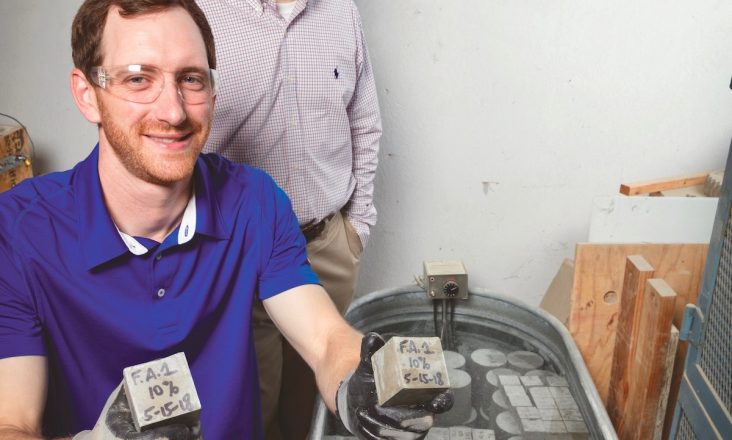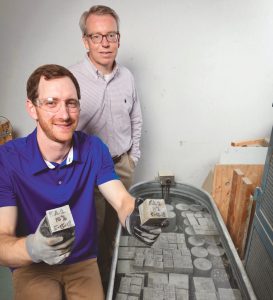UA doctoral student studies improving concrete pavement
by November 25, 2018 6:04 pm 859 views

Casey Jones (photo courtesy of the University of Arkansas)
A University of Arkansas doctoral student has been studying how to improve concrete pavements to better resist damage that deicing salts cause to roads and bridges.
Casey Jones said he was working for Materials Testing of Arkansas in Springdale and completing his master’s degree when he started to focus on improving concrete pavements.
“Personally, I liked concrete materials,” Jones said.
And after his adviser Micah Hale, who is head of the UA civil engineering department, allowed Jones to attend a week-long concrete workshop at Oregon State University, “that really got the ball rolling in terms of what we’re doing today.”
One topic of the workshop was on pavement durability and research into deicing salts.
“Pavements are usually designed in 30- to 50-year design lives,” Jones said. “The damage caused by deicing salts can reduce the lifespan by 15 to 20 years. But there are reported instances of having to replace joint sections after five years due to salt deterioration.”
Jones, a Doctoral Academy Fellow, started his doctoral work in July 2017. He’s studying the ingredients of concrete pavement to determine the best consistency to mitigate damage deicing salts cause to concrete and is researching this with other doctoral students at Oregon State University and the University of Miami.

Jones has been working to determine how much fly ash to use in concrete pavement as it’s been used in concrete for decades to reduce damage to it. Fly ash is a byproduct of coal-fired plants, and all state transportation departments allow for the use of the material for road construction, Hale said. Fly ash also is about one-third of the cost of concrete.
The challenge is getting the right consistency because too much or too little fly ash can affect the concrete quality, possibly leading to scaling or preventing it from setting properly.
“Where do we find that sweet spot at in terms of mitigating damage versus how much fly ash is too much?” Jones said. “If we know too much fly ash has its own drawbacks, then, if we need to put in too much to stop one type of deterioration, but we’re opening ourselves up to another one, then you have to balance that.”
Jones spends about 20 hours a week on his research, and he recently attended a conference in Prague to present it. Grants, such as a recently announced $500,000 gift from the Oklahoma/Arkansas Chapter of the American Concrete Pavement Association (ACPA), help pay for Jones’ annual stipend, allow him to attend concrete pavement conferences and might cover some materials costs. Conferences such as the one in Prague allow Jones to speak to other researchers in his field and learn from them, Hale said.
“The Oklahoma/Arkansas Chapter of ACPA is proud to be able to support the University of Arkansas Department of Civil Engineering through this $500,000 gift,” said Alan Meadors, Arkansas promotional director of ACPA. “These funds will be used to support students interested in concrete pavement materials and construction and advance concrete initiatives in Arkansas.”
Jones expects to complete his doctoral work in May 2020, and the Scott native previously earned bachelor’s and master’s degrees in civil engineering from the UA.
